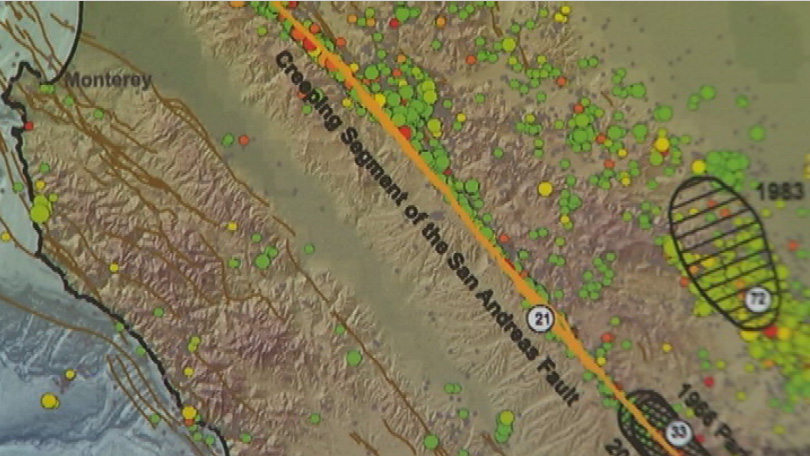

The Gulf of California is a geologically young body of water that is still growing wider and longer. The combination of sideways motion and spreading also opened up many deep, elongated basins in the seafloor of the gulf. It is this “sideways” motion that has created the many transform faults in the gulf, as well as the San Andreas Fault System in California. Near the Gulf of California, the relative motion of the plates changes so that the two plates (the North American Plate and the Pacific Plate) are moving sideways, sliding past one another. The East Pacific Rise is a “divergent” plate boundary, where huge slabs of the Earth’s crust (plates) are moving away from each other. At the northern end of the Gulf, a single large transform fault continues up toward the northwest, where it connects with the San Andreas Fault system. The transform faults form a zigzag pattern below the seafloor of the Gulf.
#San andreas fault plate boundary series
Just south of the mouth of the Gulf of California, the East Pacific Rise changes from a series of spreading centers separated by transform faults to a series of transform faults separated by small spreading centers.

Tectonic features adapted from Alvarez et al., Bathymetry and active geological structures in the Upper Gulf of California, Bol. Arrows show the relative motions of the crust at a few spreading centers and transform faults (other locations are similar). This illustration shows the approximate locations of some of these features. Just south of the Gulf of California, the East Pacific Rise breaks into a series of small spreading centers and transform faults. Geologists call these cracks “transform faults.” This causes cracks to form in the seafloor between the sections of crust, at right angles to the main axis of the spreading center. Sometimes adjacent sections of the crust spread outward from a spreading center at different rates. Over millions of years, as volcanic crust spreads outward on either side of an active spreading center, the crust begins to cool and sink.
#San andreas fault plate boundary full
The floor of the Gulf of California is full of these vents, some of which gush water at over 300 degrees Centigrade. Water percolating down into these lava flows is heated, then rises back toward the seafloor, forming hydrothermal (hot water) vents in the seafloor. The resulting underwater volcanoes spread lava across large areas of seafloor and form the core of the East Pacific Rise.

Along much of this mountain range, lava wells up from below, causing the Earth’s crust to split apart, and forming what geologists call “spreading centers.”Īctive spreading centers are hotbeds of volcanic activity. The Gulf of California sits at the northernmost end of an immense underwater mountain range called the East Pacific Rise, which extends across the Southeastern Pacific Ocean almost to Antarctica. Base image modified from 1996 NOAA poster, “Age of the Ocean Floor.” The Gulf of California lies at the northern end of an immense underwater mountain range called the East Pacific Rise. Physical oceanography and climate change.Bioluminescence: Living light in the deep sea.


 0 kommentar(er)
0 kommentar(er)
